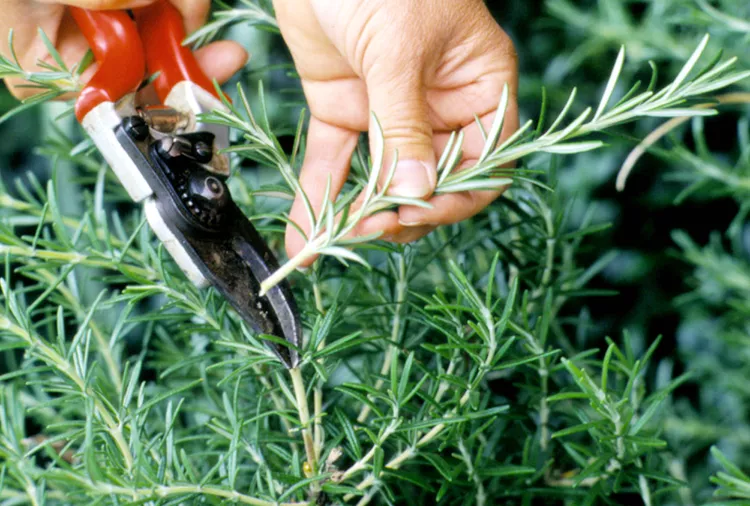Rosemary plants are commonly grown in herb gardens or pots and are harvested for their aromatic leaves and sultry flavor. But if you don’t know how to harvest rosemary, you may accidentally damage your plants while harvesting and make your herbs less productive. Learn how to avoid common gardening pitfalls and grow healthier rosemary plants with these simple harvesting tips!
When to Harvest Rosemary
Rosemary can be harvested little by little or it can be gathered in larger quantities for freezing or drying. Many growers harvest rosemary stems when pruning their plants, but you can harvest rosemary from your garden as needed for recipes too. If you want to get the best flavor, pick rosemary in spring and summer immediately before the plant flowers and, if possible, do your harvesting in the early morning when rosemary leaves contain the highest concentration of volatile oils.
Compared to many common herbs, rosemary is not particularly cold hardy and it only grows as a perennial in USDA growing zones 6 and up. In warm areas, rosemary is often harvested year round, but in colder areas these edible plants are usually picked in smaller quantities in spring and summer and then the remainder of the plant is harvested in fall before winter sets in. However, if you live in a cold spot and want to harvest rosemary year round, you can move your plants indoors and keep them as winter houseplants.
Regularly harvesting rosemary from herb gardens encourages plants to produce more leaves and stems and a bushier growth habit. But if you’re growing new rosemary plants from seeds or cuttings, you’ll need to wait until your plants are at least 6 to 8 inches tall before gathering your first harvest. These herbs are slow growers and they can take a year or more to reach a harvestable size if they’re grown from seed, but you can harvest earlier if you grow rosemary from cuttings or nursery starts.
How to Harvest Rosemary
Some herbs can be picked with your fingers, but it’s best to harvest rosemary from culinary gardens with sterilized scissors or pruners to avoid damaging rosemary stems. It’s also important to know that rosemary produces both tender, light green stems and woody stems, which are both technically edible. However, it’s best to avoid cutting rosemary back into the woody sections of the plant as this can cause unsightly bald patches of stems that won’t produce leaves.
To harvest rosemary stems, clip off the top 2 to 3 inches of new, flexible growth from your rosemary plants until you harvest the amount of rosemary you need. Make your harvesting cuts immediately above a set of rosemary leaves to encourage plants to branch and grow, and work your way around the plant, harvesting and clipping as you go, to give your rosemary a uniform look.
If you have a large, established rosemary plant, you can take small daily harvests of rosemary stems, but smaller rosemary plants should be harvested more sparingly. To avoid overharvesting, never pick more than 1/3 of your plant’s stems at once and give your rosemary a few weeks to recover if you take a sizeable harvest. That said, if you’re growing rosemary as an annual, you can clip the entire plant off at the soil line before winter arrives.
How to Store Rosemary
Fresh rosemary can be stored in the fridge bouquet-style for a week or two by placing cut stems in a glass filled with 1 inch of water. Cover the top of the rosemary with a plastic baggie to boost humidity levels and replace the water daily to keep everything fresh. If you don’t have the room in your fridge to store rosemary in this way, you can also wrap rosemary in a dry paper towel and store it in a plastic baggie in your crisper drawer.
If you want to keep rosemary fresh even longer, you can freeze rosemary stems whole or chop them and freeze them in ice cube trays with oil or water. Or you can dry rosemary in a food dehydrator or hang dry your herbs in loose bundles in a warm, dry place with good air flow.
Once the leaves are thoroughly dry and crispy, strip them from the plant stems and store them in airtight containers in a warm, dry place for up to one year. You can use a coffee mill or mortar and pestle to grind dried rosemary into a powder. But if you want to get the best flavor out of your herbs, it’s best to grind them up just before you use them.




















